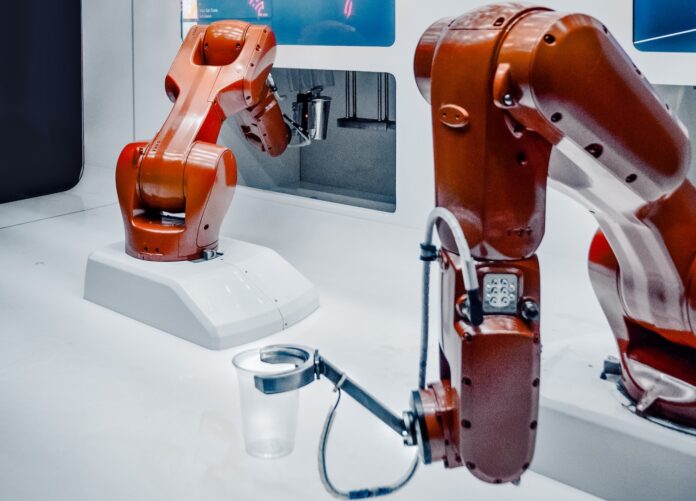In the dynamic realm of industrial automation and technology, robotic arms stand as symbols of innovation, bridging the gap between human capability and mechanized precision. These marvels of engineering, drawing inspiration from the intricate movements of the human arm, have emerged as the workhorses of numerous industries. From the factory floors where they assemble intricate electronic components, to the quiet precision of a medical surgery room, their application spans a vast spectrum. With each type of robotic arm tailored to a specific set of tasks, understanding their nuances becomes essential.
Table of Contents
The Cartesian robots, for instance, operate in a straightforward linear fashion, while the articulated variants mimic the dexterity of a human limb. As industries evolve, so does the complexity and capability of these robotic arms, pushing boundaries of what machines can achieve. In diving deep into this topic, we embark on a journey to uncover how these mechanical limbs are transforming industries, ushering in an era of unparalleled efficiency and precision. Whether you’re an industry professional, a tech enthusiast, or a curious mind, this exploration promises insights into the world of robotics and its profound impact on our modern industrial landscape.
Also read: Pros And Cons Of Using Lawn Mowing Robot
1. Cartesian Robotic Arms
Often known as linear or gantry robots, Cartesian robotic arms navigate within a three-dimensional, rectangular grid. They utilize three perpendicular axes (X, Y, Z) to achieve linear movement.
When to Use: Their straightforward movement mechanism makes Cartesian robots invaluable in precision-based operations. Ideal tasks include CNC machining where repetitive, exact motions are crucial and in large-scale 3D printing processes. Due to their predictable trajectory, they are also preferred in industries that manufacture electronic components.
Also read: Innovative Applications of ChatGPT in Robotics: Unleashing New Possibilities
2. SCARA (Selective Compliance Assembly Robot Arm)
SCARA robots are distinct with their four axes that combine rotational and vertical movements. This structure lends itself to a compact design yet offers considerable agility.
When to Use: Their design is beneficial for high-speed assembly tasks, predominantly seen in the electronics sector. SCARA robots are especially adept at handling delicate operations such as circuit board component placement or rapid product assembly. Their rotational capabilities make them excellent for tasks that require circular movements.
Also read: Major difference between robotics and mechatronics
3. Articulated Robotic Arms
Mimicking the flexibility of a human arm, articulated robots have multiple rotary joints, ranging from two to over ten. This gives them a wide range of motion and versatility.
When to Use: These arms are the go-to choice for multi-planar tasks. From automotive assembly lines where welding or mounting is essential, to medical surgeries demanding pinpoint accuracy and dexterity, articulated robots have found their calling. The entertainment industry also employs them in complex camera operations and film-making.
Also read: What is STEM Robotics?
4. Delta (Parallel) Robots
Characterized by their three arms connected to a base, Delta robots ensure the end effector stays consistent in orientation. This is achieved through the simultaneous control of all arms.
When to Use: High-speed operations are the forte of Delta robots. They are prevalent in food industries for tasks such as packaging, sorting, and even icing cakes. Their quick, precise movements are also harnessed in pharmaceuticals for pill sorting and electronic industries for component placement.
Also read: Robot End Effector: Understanding the Types and Applications
5. Polar (Spherical) Robotic Arms
Operating within a spherical envelope, Polar robots utilize rotational and linear movements. They can swing, reach out, and rotate around their base, offering a wide operational range.
When to Use: Their extended reach is useful in die casting where they handle molten metals. Similarly, in gas and arc welding, the arm’s ability to maintain a consistent distance and angle is advantageous. Large-scale painting operations, especially in automotive industries, also benefit from their rotational capabilities.
Also read: What is Robotics Engineering? A Comprehensive Guide
6. Cylindrical Robotic Arms
These arms move within a cylindrical space, achieving movements by rotating around their base, extending or retracting their arm, and moving vertically.
When to Use: The compact design of cylindrical robotic arms makes them suitable for tasks in confined spaces. They’re regularly seen in assembly lines, especially in tasks requiring precise vertical movement. Die casting and spot welding are other applications where their rotational movement combined with linear precision is leveraged.
Also read: Miso Robotics Investment Review: Analyzing the Future of AI-Powered Robotics
7. Collaborative Robotic Arms
Cobots are the future of human-robot synergies. Embedded with advanced sensors, they can detect and respond to human presence, ensuring safe operation within shared workspaces.
When to Use: Cobots are finding their way into environments that demand a blend of human ingenuity and robotic consistency. Automobile assembly, where both precision (robotic) and decision-making (human) are crucial, benefits immensely. They’re also breaking ground in sectors like healthcare, assisting in patient care and rehabilitation.
Also read: Difference Between Computers and Robots: A Comprehensive Guide
Conclusion
The evolution of robotic arms mirrors the progressive stride of automation in today’s industries. These robotic extensions, whether they trace a linear path like Cartesian arms or collaborate seamlessly alongside humans like cobots, play pivotal roles in enhancing efficiency, accuracy, and productivity. From delicate tasks in electronics assembly to heavy-duty operations in automotive welding, the distinct characteristics of each robotic arm type cater to the nuanced needs of diverse sectors. As we look ahead, it becomes clear that as industries grow more intricate, the demand for these robotic marvels will only surge. Their adaptability, precision, and relentless consistency position robotic arms as indispensable assets, ready to shape the future landscape of automation and production.

